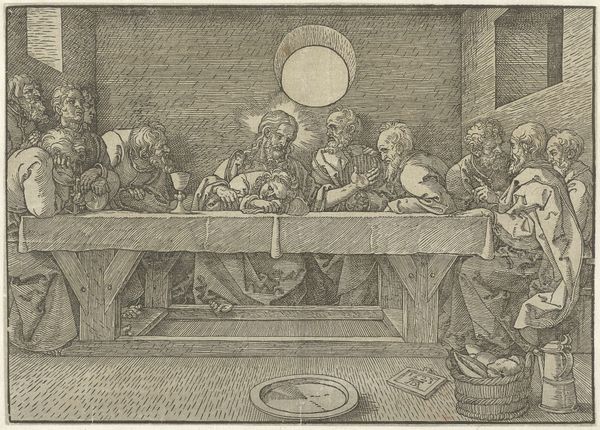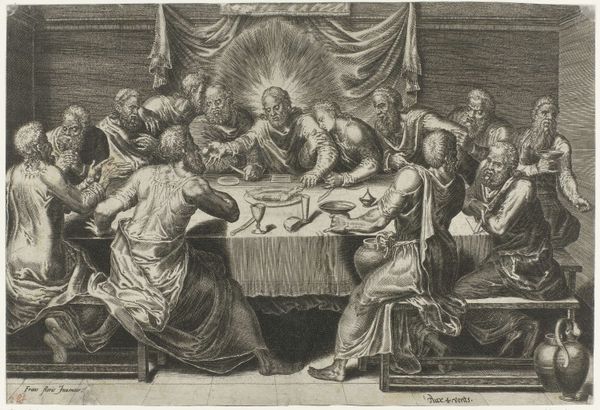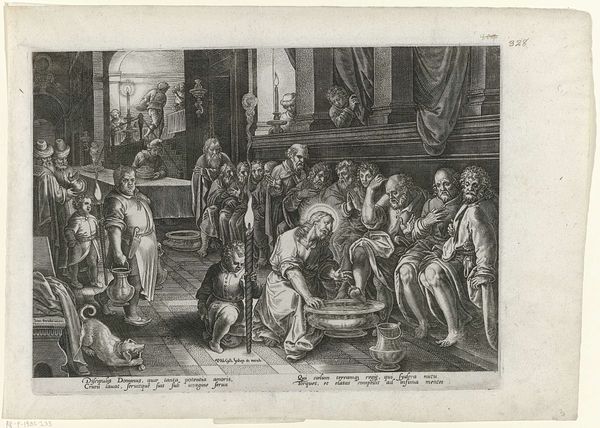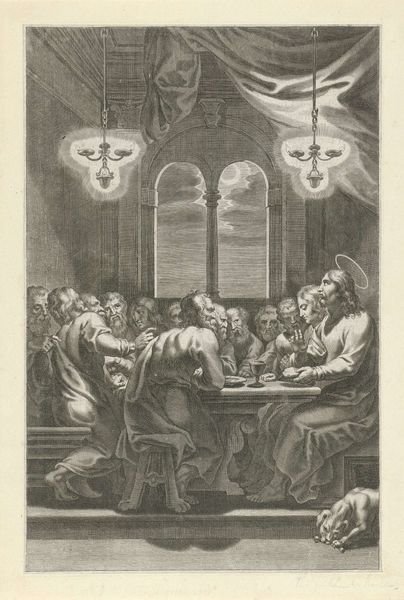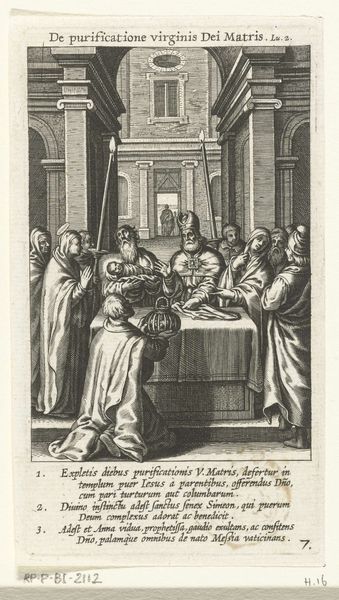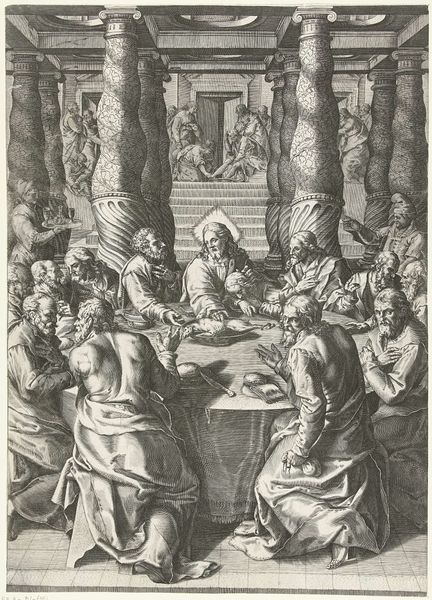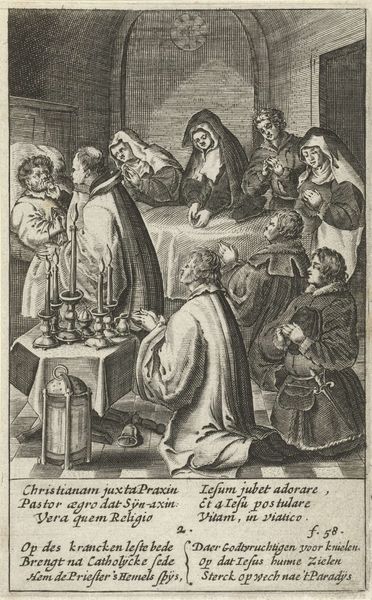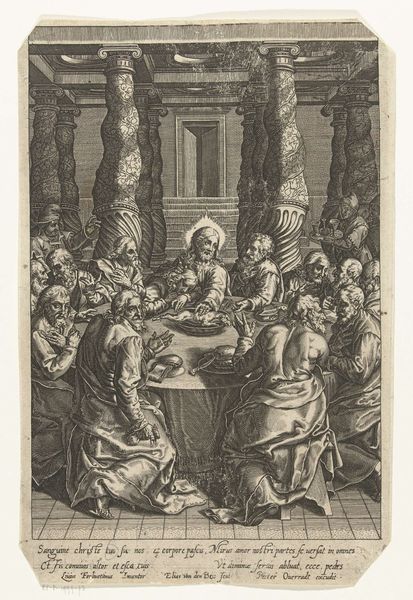
print, engraving
# print
#
figuration
#
11_renaissance
#
line
#
history-painting
#
italian-renaissance
#
engraving
Dimensions: height 193 mm, width 263 mm
Copyright: Rijks Museum: Open Domain
Curator: This print, titled "Laatste avondmaal," or "The Last Supper," created between 1585 and 1586 by Philips Galle, certainly presents a captivating scene. Editor: Yes, it's an engraving, right? It’s so detailed, especially considering the medium. What strikes me most is how… orderly it all feels, almost staged. The table is meticulously set, and everyone is posed just so. How do you read this print? Curator: From a materialist perspective, let's consider the act of making this engraving. Galle, reproducing a religious scene, is participating in a larger system of production and consumption. Consider the labor involved in producing this image, the socioeconomic context surrounding its distribution and consumption. This isn't just about spiritual interpretation; it's about the labor and resources that went into its creation, and how it circulates within a market. Who would have purchased this? What status did it give them to possess and display it? Editor: That's interesting. I hadn't really thought about it that way. So, instead of focusing on the symbolism of the bread and wine, we consider the economics of printmaking in the late 16th century. What sort of workshop might Galle have been running to produce this level of detail and, perhaps, distribute it? Curator: Precisely! Think of the skilled labor needed, the organization required to distribute prints across Europe, the investment in materials like the metal plate and paper. Each impression made slowly eroded the printing plate itself: even as the image spoke of permanence and ritual, it, too, was subject to wear, commodification, and a kind of consumption. This is not solely religious art; it is artisanal work tied to economic and social networks. What would that process have meant to Galle, or to his customers? Editor: This changes how I see it entirely. It’s no longer just a representation of a religious moment; it's a product of its time, shaped by the conditions of its creation and dissemination. I'm keen to look at art through the lens of material and labor from now on. Curator: And hopefully recognizing that "high art" is rarely distinct from labor practices or "craft." A truly important perspective!
Comments
No comments
Be the first to comment and join the conversation on the ultimate creative platform.

